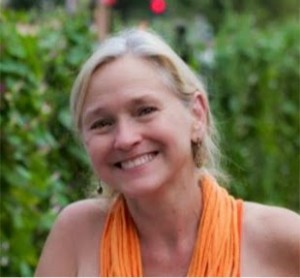We’re pleased to present our latest Wordsmith Interview!
Beth Nelson
“Forever young with an old soul”
Centennial, Colorado
– B.A. English, Oklahoma State University, Stillwater, OK
– Publishing Institute, University of Denver, CO
– Currently participating in The Book Project, a pilot program created by The Lighthouse Writers Workshop literary center in Denver, CO—a mini-MFA of sorts—designed to assist writers in bringing their manuscripts to publication.
The Writer
Do you have a specific writing style?
Relying heavily on the unconscious, I write uncensored to the end of a story, then go back and try to understand what has entered the page. From there, the tools of a writer engage, and it is a long process.
Do you see writing as a career?
I see writing as a career, but in the same way being a Buddhist monk is a career: practice, practice, practice.
What do you consider to be your greatest accomplishment as a writer?
My greatest accomplishment as a writer is that I sit down to the page consistently and with love. This took years of nurturing to develop.
What is your greatest challenge as a writer?
My greatest challenge is finding the “mot juste.” A metaphor or word may be beautiful, but if it doesn’t convey exactly what I want to say, I must kill my darling.
The Work
Tell us about your work in Crack the Spine.
“The Man on the Bridge.” When I began the story, I had few goals. Once complete, I saw the story’s theme as one’s inability to change, even in the face of catastrophe; the numbness and apathy some exude.
What inspired this work?
“The Man on the Bridge” was inspired by Chris Ransick’s book of poetry “Asleep Beneath the Hill of Dreams,” which “explores the often permeable membrane between conscious and subconscious worlds.” I wanted to write a layered story, one that unfolded out of a dream as it came to the page. Watercolor paintings express layering well—all I knew was that my character would paint. Recent floods in Colorado infiltrated my mind, and therefore, the piece. I was stunned as I watched the story reveal itself. “Get off the bridge,” I kept thinking. But my character wouldn’t let that happen! It came out quickly, in about an hour, and I did little revision.
Anything else you’d like to share about your work in Crack the Spine?
When I searched for a home for the piece, I came back to Crack the Spine again and again. I felt led to the journal.
Tell us about another project you have published or are currently working on.
An excerpt from my story “Dead Cows Standing” will be included in a group art exhibition in January. The exhibition includes work by four visual artists: Corwin Levi, Sarah Fagan, Anne Connell and Roger Feldman; two musicians: Eun Young Lee and Jeff Roberts; and three writers: Kate Kingston, Michelle Aldredge and myself.
What inspired “Dead Cows Standing?”
In the winter of 2013, I served as Interim Director for Brush Creek Foundation for the Arts’ residency program. The April group of residents bonded in a special way, and Corwin Levi created a proposal to exhibit the talents of the group in a fine art gallery. The proposal was quickly accepted.
Where/When can we find this work?
Kirkland Arts Center, near Seattle, Washington, from January 17 – March 15, 2014. It will be there during the AWP!
The Methods
How often do you write?
I write daily, with four to five days a week of prolonged writing—four hours or more.
Where do you write?
My “bliss station” is in front of a sliding glass door that looks out into my yard. I write standing at my computer and keep distractions to a minimum, though I surround myself with photographs of famous artists: Frida Kahlo, Georgia O’Keefe, Carl Sandburg, Miles Davis…
How many drafts do you generally go through before you consider a piece to be complete?
With few exceptions, there are dozens of rewrites and revisions.
What is your usual starting point for a piece?
An image, sentence or idea will trigger a story. Plot is rarely the initial drive of a piece, but location often is. I love rural settings.
What is your best piece of advice on how to stay sane as a writer?
My answer is an emphatic DON’T! But if that fails: 1) have a routine, 2) don’t wait for the muse, 3) come to the table. To paraphrase Norman Mailer, you (the writer) must form a trust relationship with your unconscious. If you don’t show up for your scheduled date with your muse, your muse will stop showing up.
The Madness
If you could have dinner with one fictional character, who would it be and why?
I would dine with Hermann Hesse’s Siddhartha because I want to feel the “knowledge of the oneness of the world circling in me like my own blood.”
What is the greatest occupational hazard for a writer?
Self-doubt. I say “fake it til you make it.” You have something to say and the more you practice saying it, the more likely you’ll find your path. Get those 10,000 hours in!
What is your favorite word?
At this moment,“synchronicity.”
How many of your characters have you ended up killing off?
I counted my dead cows today. I’ve begun my stories with them twice, and there’s a cow floating down the river in “The Man on the Bridge.” Can someone please psychoanalyze this for me? I am unsure if the man on the bridge dies, but I’ve brought several characters back from the brink of death.
What is the most beautiful thing you’ve ever seen?
While trekking in Nepal, I watched clouds lift from the towering peaks of the Himalayas, only to reveal an unexpected, expansive layer mountains behind.
Beach or Mountains?
Mountains
Cats or Dogs?
Dogs
Shakespeare or Tennessee Williams?
Tennessee Williams
Additional Reading on Beth
Website: You’ve Got to Start Someplace
Article in Lighthouse Beacon, Winter 2013, page 7: The Landscape of Loss: A Talk with Beth Smelser Nelson, by Amanda Rea.


An essential component of the inspiration for Man on the Bridge was neglected, and I want to rectify this now: The story was written as a response for a class taught by the amazing Richard Froude (author of Fabric: Preludes to the Last American Book), hybrid/experimental writing. Heavily influenced by Chris Ransick’s collection, I was also responding to a nonfiction piece written by classmate Jamie Boarman! So sorry you were neglected, Jamie & Richard. The piece may not exist without you! Beth Nelson